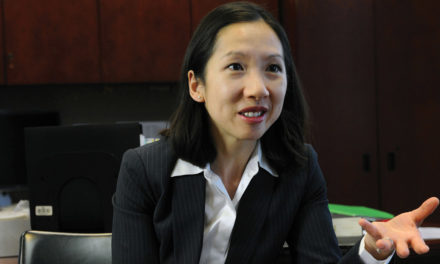You’ve no doubt seen and been startled by the headlines:
“Christianity Declines Sharply in US, Agnostics Growing: Pew”—Newsmax
“Christians In U.S. On Decline As Number Of ‘Nones’ Grows, Survey Finds”—National Public Radio
“Big Drop in Share of Americans Calling Themselves Christian”—The New York Times
“America Is Getting Less Christian and Less Religious, Study Shows”—The Huffington Post
These headlines refer to a report from the good folks at the Pew Research Center, released earlier this year, on the shape of America’s religious landscape. With such powerful and respected news sources proclaiming this dour news, who could possibly doubt the truth of it?
While it is true in general, the story is more complex than most of the current mainstream stories explain. And some of what it reveals is a source of encouragement.
The Rise of the Nones
Yes, there is plenty of bad news in the report—the worst being that those who proclaim not to identify with any particular faith tradition (the “nones”) are increasing in startling numbers. These religiously unaffiliated individuals rose nearly 8 percent since 2007, the sharpest increase in any religious identity category the researchers studied.
Of those who grew up in a particular faith, 18 percent now identify as “nones.” However, these are not necessarily those who do not hold any faith, but simply no longer describe themselves as any particular thing—Methodist, Buddhist, Mormon, Jewish, Pentecostal, etc. They just say they believe what they believe without putting labels on it. This would include those who increasingly say they are “spiritual” but not “religious.”
These “nones,” are indeed different, depending on which generation they belong to. The younger they are, the more likely to be among the nones.
| Nones | % Identify in 2014 | Change 2007 to 2014 |
| Silent Generation (1928-1945) | 11 | +2 |
| Boomers (1946-1964) | 17 | +3 |
| Generation X (1965-1980) | 19 | +4 |
| Millennials (1981-1996) | 25 | +9 |
Indeed there is bad news in the report for Christianity in general—but upon closer examination, it turns out to be quite good news, actually.
The Big Picture
How can that be? Let’s begin with the big picture in general:
Christianity: It indeed declined nearly 8 percent, with 71 percent of American adults identifying as Christians today, down from 78 percent in 2007.
“Nones”: Overall, they increased just over 6 percentage points over this same time, from 16 to 23 percent.
Non-Christian Faiths: These saw slight growth—collectively 1 percent—from just 5 percent in 2007. The greatest increases were found among Muslims and Hindus, both of which generally doubled to 0.9 and 0.7 percent of all American adults respectively. Jewish identity grew by a smidge of a percentage point to 1.9 and Buddhism remained steady at 0.7 percent of all U.S. adults. Most of this small growth is from immigration of Muslim and Hindu individuals rather than conversion.
But things get interesting when you break down the various Christian traditions and identities. That’s where the good news comes in, at least for those who care about faithful, biblical Christianity.
Getting Stronger
There are obvious changes happening among mainline Protestant traditions, as too many of them have accommodated themselves to the spirit of the age. They are regularly jettisoning essential Christian truths: Salvation through Christ alone, the reality of sin, satan and hell, increased acceptance of abortion, free sex, homosexuality and same-sex marriage, all the way to ordaining clergy who are in same-sex relationships.
How does Pew show these traditions holding up in the growth/loss category? The leaders of these denominations describe them as becoming more “welcoming and inclusive,” so you would think this would mean more people are being drawn to them. Who doesn’t like to be welcomed and included?
But Pew’s data—as well as that of other organizations that do such research—reveals that the mainline Protestant churches are absolutely hemorrhaging members. To mix metaphors, their people are running for the exits as if these churches are in flames—which they seem to be, and not in the revivalist way. In absolute numbers, these denominations—United Methodist, American Baptist, Evangelical Lutheran Church in America, the Presbyterian Church USA(PCUSA) and Episcopalians in general—have collectively declined by five million adults since 2007, the starkest decline of any Christian tradition.
Of course, previous Pew research shows their precipitous decline was already in full flow well before 2007, only getting worse in the following years. For instance, since the mid-1960s, the Episcopal Church has lost nearly 50 percent of its members; the United Church of Christ 52 percent, the PCUSA47 percent and the Evangelical Lutheran Church of America has shrunk by 27 percent.
What about other Protestants, such as the evangelicals? (According to the elites on both coasts, in the media and even some popular Christian leaders, these are the rigid, judgmental, slow-witted, busy-bodied “fundamentalists” who of late have become both increasingly hateful and bigoted. Clearly, people should be leaving this brutish group in record numbers. So what is their rate of decline?
What decline?
While the mainstream Protestant churches are now down to 36 million adults, there are 62 million American adults who call themselves evangelicals. These are the Southern Baptist, Assemblies of God, Church of Christ, Presbyterian in American, Lutheran Church–Missouri Synod and many different sorts of nondenominational congregations.
But actual numbers don’t show us decline or growth. Pew explains that the number of evangelicals in American may have increased by as much as 5 million from seven years ago.
Breaking It Down
In 2007, largely half of all Protestants (51 percent) identified as evangelical, whereas today, 55 percent of all Protestants identify as evangelicals. If the mainliners are exiting those churches in droves, where are they going? Well, many of them are fleeing to stronger bible-teaching and practicing churches.
Pew explains that “the [faith] family that shows the most significant growth is the nondenominational family.” These churches today—nearly all of them identified as evangelical—represent 6 percent of all American adults, up from 5 percent in 2007. Pew also explains that “nondenominational Protestants, by contrast [with mainliners], gain more adherents through religious switching (leaving one faith tradition for another) than they lose.” These churches must make room for five new places in their pews (or stackable chairs) for every one that becomes vacated due to religious switching.
Additionally, evangelical churches retain members from childhood at a higher rate than mainline churches do, 61 to 58 percent.
So What Does This Mean?
The good news here is not just that evangelical churches are continuing to grow, but why. It’s this that really matters for our faith.
These are the churches that seek to be faithful to the teachings of historic Christianity, teaching the scriptures without changing it to the blowing winds of current social fashion. They know that it is God’s church, not theirs to change as they see fit. And people are voting for this fidelity to Christianity with their feet.
Think about the churches in your own community: Which ones are growing? Which are you hearing about in terms of vibrancy and interaction in the community? Most likely, it’s not the mainline churches, which are bailing on key Christian beliefs. It’s the churches that are teaching the scriptures in faithful and applicable ways. It’s most likely the ones calling their congregants to community ministry, obedience to Christ in their moral lives, developing disciplines of spiritual growth. They are the churches that are teaching, practicing, sharing and making real the wonderful and world-changing power of the Gospel. They are introducing people to Christ as He is in real ways.
As well, think of those churches in your community that are identified with mainline traditions, but are indeed growing. They exist: We have two such churches that easily come to mind in Colorado Springs. These churches are growing, not because they are mainline, but because they are remaining faithful to the Word and resisting the direction of their errant denominations. These are faithful, Scripture-teaching and –practicing churches that are reaching out into the community with loving and hopeful messages to repent and believe in the Gospel; these words are backed up by their love for the lost, evidenced in helping people meet their practical everyday needs of food, shelter, medical care and education.
People are coming to churches like these because they actually offer something that people desperately need. To paraphrase the great Southern novelist Flannery O’Connor, if your church isn’t going to believe and practice real Christianity, “why bother!”
Why bother, indeed. And the latest Pew data bears this out.
FOR MORE INFORMATION:
Read “America’s Changing Religious Landscape” (Pew Research Center, May 2015) by visiting http://pewrsr.ch/1FhDslC.






